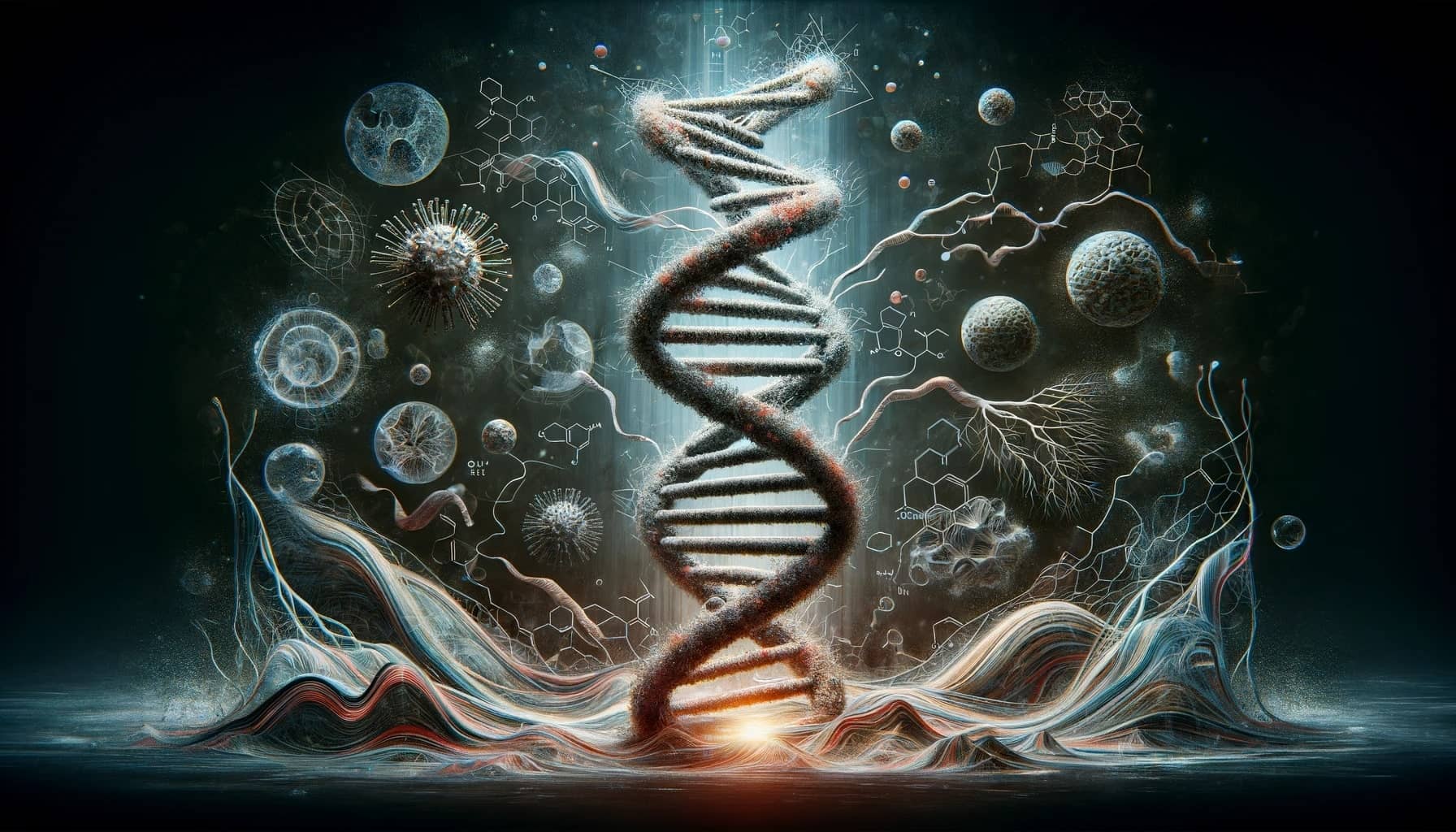
The Fragile Blueprint: Unraveling the Mystery of Genomic Instability in Aging
Our genetic makeup, often perceived as a flawless blueprint, is surprisingly vulnerable to damage, especially as we age. Aging introduces numerous challenges to our DNA, the molecule at the core of our cells that determines everything from our physical traits to disease susceptibility1.
Understanding Genomic Instability in Aging
Genomic instability, a crucial factor in aging, involves various ways DNA can sustain damage. External sources like UV light, pollution, and chemicals, along with internal factors such as cell division errors, natural chemical reactions, and oxidative stress, can harm DNA. This oxidative stress, from oxygen-containing molecules, can damage cellular structures.
DNA Threats and Genomic Mosaicism
DNA faces threats including mutations, deletions, structural rearrangements, and even viral integration. These alterations can result in genomic mosaicism, where cells have varied genetic compositions, impacting both normal and pathological aging.
Decline in DNA Repair with Age
As we age, our body’s DNA repair capabilities diminish, leading to an accumulation of genetic damage, particularly in nuclear DNA. Aging cells accumulate mutations and other damage forms, disrupting gene function. This disruption affects cell function and can lead to stem cell exhaustion, accelerating aging and increasing disease susceptibility.
Mutation Accumulation and Survival Priority
A notable example of mutation burden is in the esophageal epithelium. Cells in this tissue accumulate hundreds to over 2,000 mutations per cell from youth to middle age. Our cells prioritize survival over perfect DNA repair, tolerating some damage due to the high energy cost of complete repair, leading to a gradual decline in genomic integrity.
Link Between DNA Mutation Rate and Lifespan
Studies in various mammals show an inverse relationship between DNA mutation rate and lifespan. While normal mutation rates might not directly cause aging, deficiencies in DNA repair certainly hasten it. This is evident in certain rapid aging-linked mice studies and human syndromes. Conversely, some long-lived species and genetically modified mice with enhanced DNA repair suggest a connection between better DNA repair and longer, healthier lives.
Exploring DNA Repair Genes and Aging
Research on genes like SIRT6, which plays a role in DNA repair, is promising. In mice, overexpressing SIRT6 not only boosts DNA repair but also extends lifespan, indicating potential in targeting DNA repair mechanisms to delay aging and age-related diseases.
Future Directions in Aging Research
Ongoing research continues to uncover the complex relationship between DNA stability, repair mechanisms, and aging. This could lead to future interventions that might extend lifespan and improve life quality in our later years.
